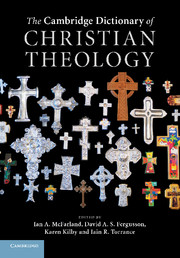T
Published online by Cambridge University Press: 05 June 2012
Summary
Taizé Community of The Community of Taizé is an ecumenical monastic community located in southern Burgundy between the historic centres of western monasticism: Cluny and Citeaux. It was founded in 1940 by Brother Roger (1915–2005). Deeply concerned with the division of Christians that he saw as a cause of tension and war in society, Brother Roger left the security of his native Switzerland (where he was a Reformed pastor) and settled, on his own, in the small village of Taizé. There he prayed three times a day and hid Jews fleeing Nazi-occupied France, bringing them safely to Switzerland. Forced to leave when the Gestapo invaded his house, he returned to Geneva where three other men joined him. The little community returned to Taizé in 1944 and quickly grew, attracting men from various Protestant denominations from throughout Europe. After Vatican Council II it was also possible for Catholics to join the Community. Today, the Community of Taizé is constituted of brothers from all mainline denominations and from all continents.
Early on, the Community developed a musically rich liturgy with the help of Father J. Gelineau, S. J. (1920–2008). Drawn by the beautiful liturgy and the novelty of a Protestant monastic community, the number of visitors steadily grew. The twelfth-century village church was soon too small and a larger church was built on the hill of Taizé – the Church of Reconciliation, which can hold up to 8,000 worshippers.
- Type
- Chapter
- Information
- The Cambridge Dictionary of Christian Theology , pp. 494 - 523Publisher: Cambridge University PressPrint publication year: 2011
References
- 1
- Cited by



